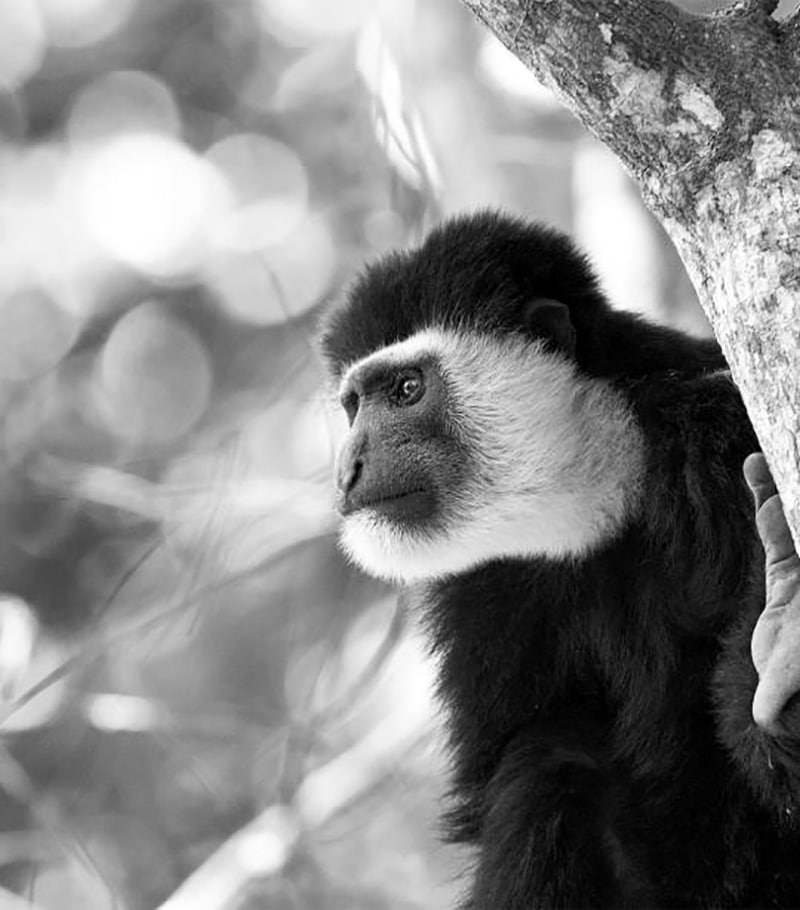Lake Ngosi – Snapshot of the Amazing Crater Lake
Lake Ngosi is a stunning crater lake in Tanzania’s Southern Highlands.
Lake Ngosi, Africa’s 2nd largest crater lake, is the most popular tourist destination in the Rungwe region, attracting hundreds of people each year.
Location of Lake Ngosi
Lake Ngosi is situated about 38 km south of Mbeya town, in the Tukuyu Township. It is situated on the summit of Ngosi in the Uporoto Highlands, which are part of the Eastern Arc mountains.
Lake Ngosi is situated at the height of 2,600 m above sea level in the dense, natural rainforest of the Uporoto natural park, which covers an area of 9,332 hectares. It measures 2.5 kilometres in length, 1.5 kilometres in width, and is 75 meters deep.
How to Get to Lake Ngosi
To reach Lake Ngosi, you need to drive to the border of the Uporoto Natural Forest, which is found on the slopes of the Uporoto mountain. It can take up to two hours to hike from the foot of the mount to the ridge where the lake is located 200 meters below.
Trekking or walking to the crater rim through the thick montane forest is a fascinating journey. The forest is home to monkeys and a variety of bird species, as well as a rare chameleon species and highlands, wild banana plants.
The Uporoto mountain is walked and climbed by skilled guides knowledgeable about the route, which is made up of waterfalls, terrifying canyons, and valleys where one might fall with no way to rescue them. If one treks without care, it is dangerous to fall into the canyons, and if one falls into any of the many gorges on the trip to Lake Ngosi, that will mean the end of their life.
Despite these dangers, trekking the Uporotos and viewing the gorgeous Lake Ngosi, a sight of extraordinary natural beauty, and a good hiking hotspot is always a safe bet.
Wildlife, Ancient History and Myth Surrounding Lake Ngosi
It’s a green, glistening lake surrounded by the extinct Lake Ngosi Volcano’s collapsed crater. The highest point in the Uporoto Ridge Natural Reserve is the summit. An indigenous three-horned chameleon can be found in the forest [Chameleon fuelleborni].
This magnificent caldera lake goes back to the Neocene era. The H2o [water] is slightly salty, has some fish, and may reach a depth of 75 meters deep. For the locals, the lake holds spiritual significance.
A caldera is a violently circular depression formed when a magma chamber ceiling collapses into the magma body underneath it. It’s a big, spherical depression caused by a volcano’s damage during a violent eruption.
The lake and the mountain are a million years old, and the mountain is still an active volcano that has fallen into a huge crater filled with gleaming alkaline ‘soda’ waters.
Lake Ngosi’ waters are believed to have mystical healing properties. Ngosi translates to ‘The Big One’ in Kinyakyusa tongue.

Climbers who want to see this beautiful lake can do so from the peak of the high crater rim, where the lake glitters below with an amazing sense of tranquility, and the terrain beyond is entirely covered with the points of tiny volcanic peaks.
Walking to the rim takes you past upland grasslands as well as tropical forests, where groups of Colobus monkeys play, and chatter, and a swarm of birds seek shelter.
The path enters the forest from approximately 2.5 kilometres before beginning the ascent to the crater rim. The trail splits just before the summit, with the right branching off to the peak and the left fanning off to the Lake Ngosi water’s edge.
For more articles related to lakes in Tanzania and their inhabitants click here!

































